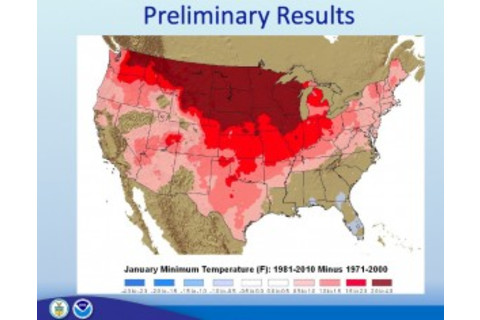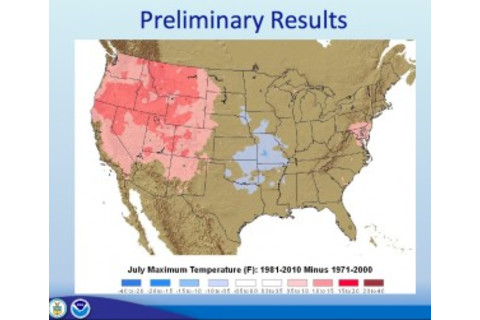This is a guest post by Jamie L. Vernon, Ph.D., a research scientist and policy wonk, who encourages the scientific community to get engaged in the policy-making process
Many of us were shocked by the horrific tornado outbreaks that occurred this spring. And, yes, parts of the country are currently experiencing record high temperatures this summer, like never-before-seen temperatures as high as 117 degrees Fahrenheit in Childress, Texas. If I was a scaremonger, I might use these events to argue the case for anthropogenic global warming. However, the science doesn't necessarily support this argument, so I do not participate in such behavior. The science predicts that extreme weather events will be more likely and more often, but for now it is difficult to say whether we have reached the point at which those predictions are becoming reality.
To complicate things further, the science behind climate change occasionally presents information that, at first glance, appears to be contradictory to the concept of global warming. Case in point, NOAA's National Climatic Data Center (NCDC) recently released the "new temperature normals." These figures represent the average temperatures taken over the last 30 years. Surely, you've seen your local weatherman mention the normal high and normal low for the day. Usually this is accompanied by how the rainfall for the month compares to the average. The new calculations have provided some misleading results, when looking at them from a global warming perspective.

Dan Satterfield is a Certified Broadcast Meteorologist, which means he has a background in atmospheric physics. This makes him a rare breed among meteorologists, a real scientist. Dan writes on his blog at the AGU Blogosphere, that the country is definitely getting hotter, but the way we present the data may mislead some people. According to Dan, calculations from the NCDC show that the new normal temperatures in the northern areas of North America have increased. These increases are most pronounced during the winter and nights. This trend has been predicted and was expected by scientists based on the phenomenon of global warming.
One result that was expected by the scientists but will most likely be confusing to the public is that "normal" summer temperatures in parts of Oklahoma and Texas have actually dropped slightly. The reason? In 1980, these areas experienced one of their most scorching summers on record. High temperatures were sustained for an extended period of time. So, the "normal temperatures" calculated using these data points skewed them to higher averages. Now that we are beyond the 30 year window that included that summer, the extremely high temperatures will no longer be part of the equation and the "normals" for that area will drop slightly.

This is not an argument against global warming. In fact, the increase in temperatures in the northern parts of the country outweigh these slight drops. However, you might expect, especially in states like Texas and Oklahoma that some individuals will try to make that argument. Just remember, the science says otherwise.
For those of us who try to explain climate science in a easily translatable way for the general public, examples like this are the ultimate challenge. Climate change is complex and requires a complex explanation. The public prefers black and white. It would be easier to falsely co-opt extreme weather events to prove the case for global warming. But that wouldn't be the fair and balanced way, now, would it?
In the future, communicating the effects of climate change will be further challenged by the use of new mathematical devices put forth by the NCDC to determine normal temperatures. One of the improvements is called "moving averages." This basically means the data underpinning the calculations will be updated yearly, no more waiting 23 years to update the normals. According to Bob Henson, one problem meteorologists and science communicators may find with this procedure is that very high temperatures will no longer seem so extreme because the "normal" temperatures will include most recent warming trends.
In other words, we will literally be communicating rising temperatures to the slow-boiled frog.
Follow Jamie Vernon on Twitter or read occasional posts at his personal blog, “American SciCo.”













